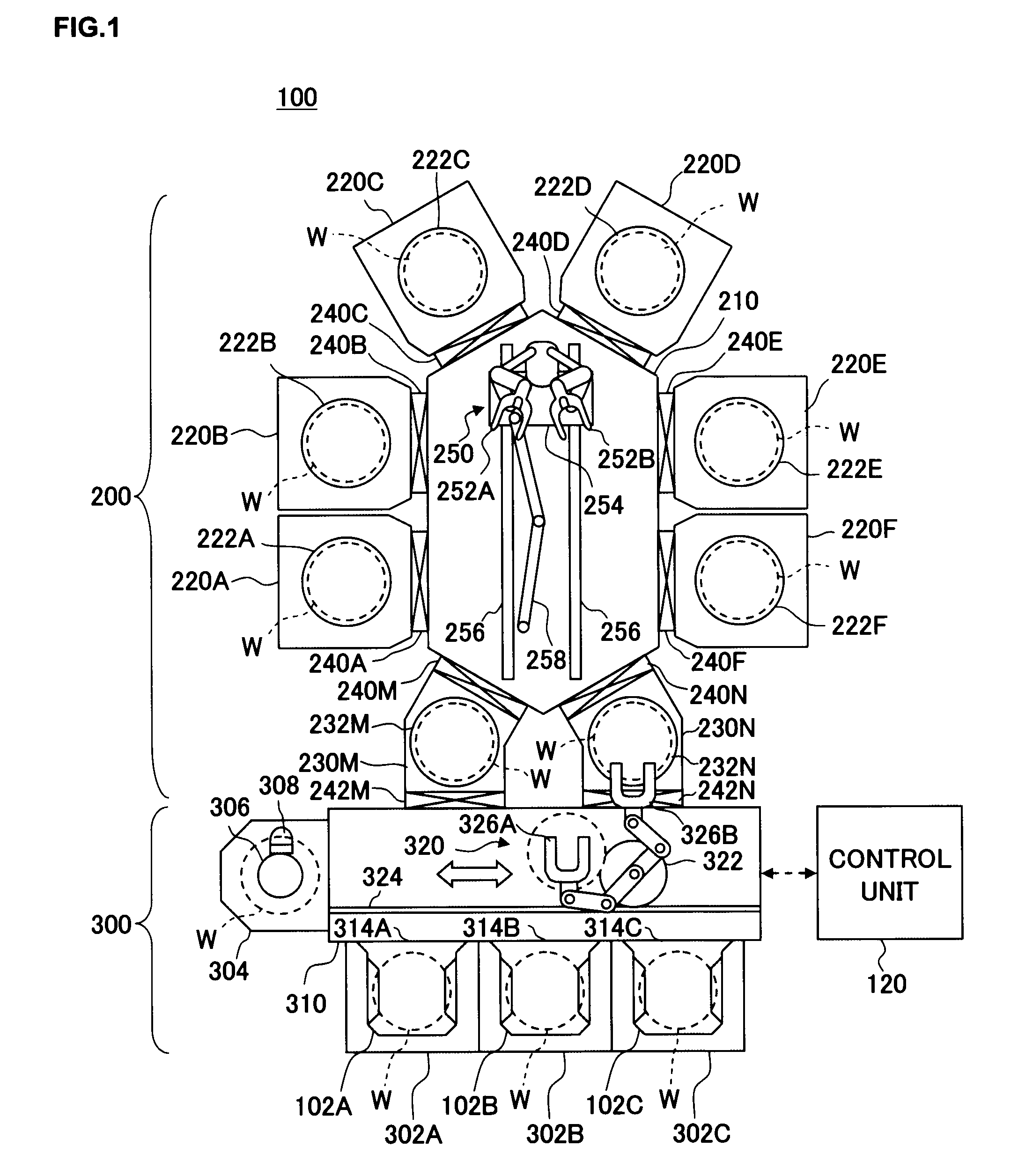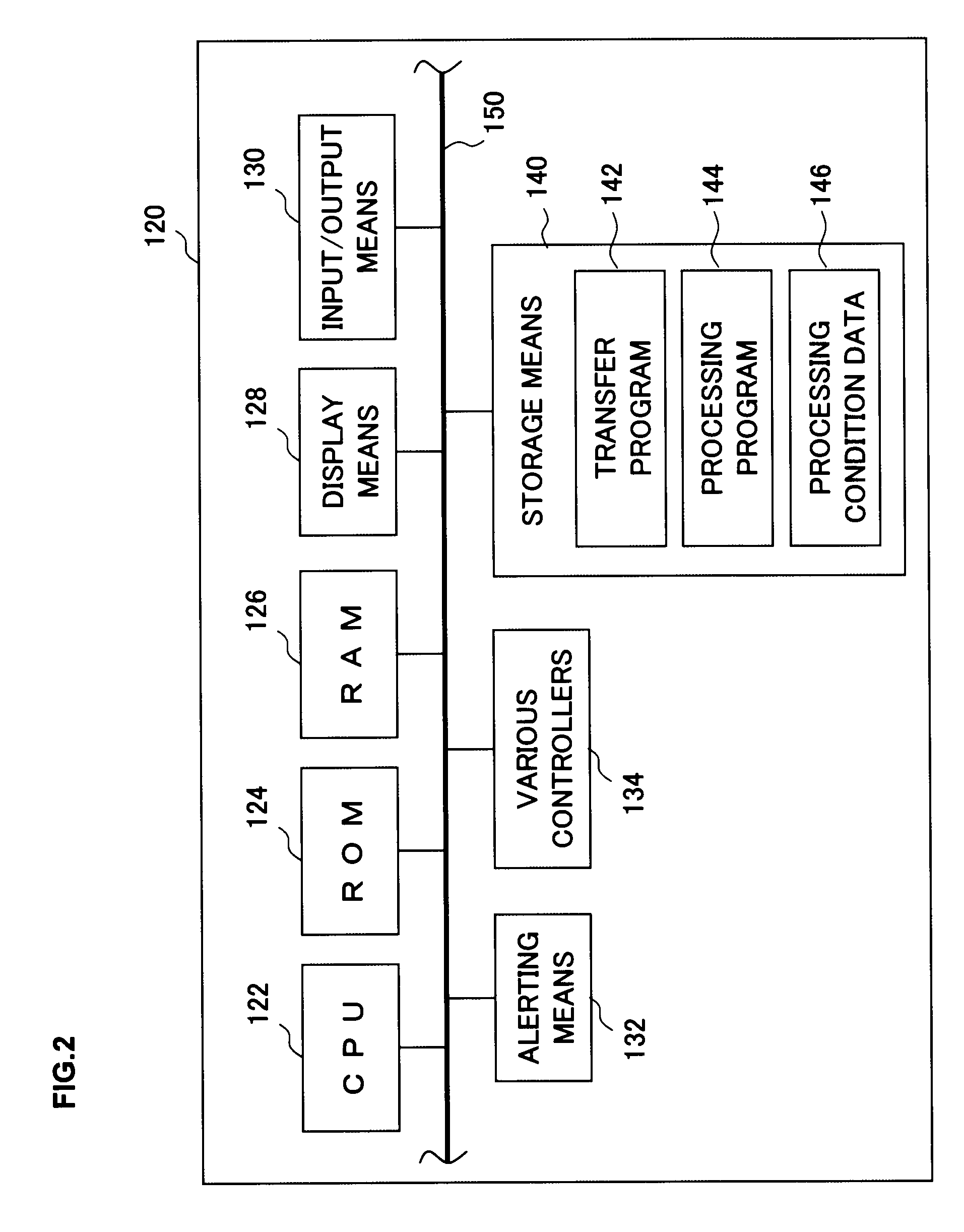[0015]Accordingly, an object of the present invention, having been completed by addressing the issues discussed above, is to provide a substrate processing method and the like, which make it possible to release water in an insulating film with a low dielectric constant exposed at a recessed portion having been formed on a substrate through an etching process, disallow ready absorption of any additional water into the insulating film and remove an undesirable metal compound formed at a metal layer having become exposed at the recessed portion through the etching process or the like.
[0019]According to the present invention described above, the water present in the low dielectric constant insulating film can be released to a sufficient extent through the
hydrogen radical processing and the low dielectric constant insulating film exposed at the recessed portion can be rendered hydrophobic through the hydrophobicity processing executed in direct succession following the
hydrogen radical processing. As a result, the
water content in the low dielectric constant insulating film can be reduced to a sufficient extent and also, any further
absorption of water into the low dielectric constant insulating film is effectively prevented. This, in turn, improves the electrical characteristics and the mechanical strength of the low dielectric constant insulating film. The surface of the metal layer exposed at the recessed portion is cleaned through the
hydrogen radical processing and thus, any undesirable metal compound that may have been formed during the etching process or the like at the exposed surface of the metal layer can be removed through the
hydrogen radical processing. Consequently, any wiring metal embedded in the recessed portion can be connected to the metal layer with less resistance.
[0020]In addition, the hydrogen radical processing phase and the hydrophobicity processing phase are executed in succession in a low pressure environment without exposing the processing target substrate to air. Thus, even if the hydrogen radical processing renders the composition of the low dielectric constant insulating film exposed at the recessed portion to that which allows ready water absorption,
reabsorption of water into the low dielectric constant insulating film prior to completion of the subsequent hydrophobicity processing can be effectively prevented.
[0022]Through the hydrophobicity processing phase, the low dielectric constant insulating film is rendered hydrophobic as a water-repellent layer is formed at the exposed surface of the low dielectric constant insulating film through a
chemical reaction with the specific processing gas. The presence of such a water-repellent layer prevents
reabsorption of water into the low dielectric constant insulating film. The specific gas used during this phase should be a silylating gas obtained from a compound that includes, for instance, a
silazane (Si—N) bond within the molecules thereof. In such a case, a water-repellent layer will be formed as the exposed surface of the low dielectric constant insulating film having become damaged during the etching process or the like is silylated with the silylating gas. Namely, through the use of the silylating gas, a water-repellent layer is formed while restoring the quality of the low dielectric constant insulating film having been damaged during the etching process.
[0025]According to the present invention described above, the etching processing, the hydrogen radical processing and the hydrophobicity processing can be executed in succession without exposing the processing target substrate to air and thus,
absorption of water into the low dielectric constant insulating film during the interval between the etching processing and the hydrogen radical processing as well as during the interval between the hydrogen radical processing and the hydrophobicity processing can be effectively prevented. In addition, since the hydrogen radical processing and the hydrophobicity processing are executed in succession after the low dielectric constant insulating film undergoes the etching processing,
reabsorption of water into the low dielectric constant insulating film is effectively prevented once the
water content in the film has been sufficiently lowered and any undesirable metal compound formed at the exposed surface of the metal layer during the etching process or the like can be eliminated.
[0026]According to the present invention, water present in the low dielectric constant insulating film exposed at the recessed portion formed by etching the substrate is first released to a sufficient extent, further
absorption of water is inhibited and any undesirable metal compound formed at the metal layer having become exposed at the recessed portion through the etching processing or the like can be removed. As a result, the electrical resistance at the metal wiring can be kept to a low level, the low dielectric constant insulating film is allowed to sustain its low dielectric constant and a reduction in the mechanical strength of the low dielectric constant insulating film is prevented which, in turn, allows, a multilayer wiring structure with superior electrical characteristics and mechanical strength to be formed on the substrate.
 Login to View More
Login to View More 


